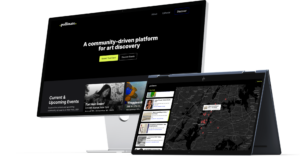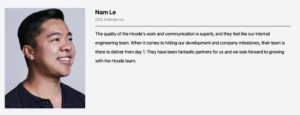EVOLVING FRONT-END DEVELOPMENT

At the genesis of front-end development, the internet was also new. The websites were unstandardized and disorderly. The expectations from the web developer were to develop a website with basic functionalities.
In the tamed web of today, front-end development is a more regulated field. Our expectations from the front end have changed significantly. We are less forgiving of volatile designs and complicated interfaces. Today, the user wants an excellent user experience and intuitive design.
The demands from the front-end developers are in switching mode. They are expected to build digital products in accordance with the changes in the UI/UX world. In order to understand the shift in the demands of user expectations when it comes to digital design, an investigation into the journey of front-end development, its past, present, and future is warranted.
Front-end development
Front-end development also known as client-side programming is the development of the user side by using HTML, CSS, and Javascript for a website or web application so a user can see and interact with them directly.
Front-end developers handle the user interface. They are behind what you see up-front when navigating digital products.
Walk down memory lane
Erratic Origins: In the internet inception days, the web was like the wild west: a vast, unmapped terrain where websites were unstandardized and disorderly. Front-end development first appeared in the early 1990s alongside HTML and CSS. It was a mess of incompatible browsers, quirks, and moving targets. A simple feature that worked well for a website in one browser wouldn’t work in another.

Meanwhile, on the software side, new software was restricted to the capabilities of computers. Instant usability was almost unheard of, and digital products came with hefty instructions. Add to that the continued evolution and change of computing power and technology and several perplexing quirks for each system or browser.
Result: An unbridled mess of front-end development on your hands.
Javascript’s appearance in 1995 started a new era for front-end development.
Historic Expectations: The internet was new, and the explosion of DIY websites meant that no two websites were identical. For those of us browsing this random world, demands were primitive. Expectations were only as high as a website having basic functionality. Can I tell clickable elements from the static text?
The novelty of home computers and the rapid growth of internet access meant that nothing was yet universal; there was no standard for digital usability. Front-end developers struggled to keep up with evolving browsers and coding quirks.
The present state of affairs
Intuitive design: Fast-forward to this day, and front-end development has changed. It is not just about developing a user interface that looks good on the surface anymore but also about providing an excellent user experience. The complexity for front-end developers has shifted to ensuring that interactive sections are where people think they should be. It has become about intuitive experiences.
Modern users are used to quick, navigable, easier-to-use, and instantly understandable designs. It has been possible due to technologies like React, Angular, Vue, and others. As per the State of Frontend survey, React dominates the JavaScript framework mind share. React enjoys embracing a big community.

Current Expectations: The human condition to want things faster, more engaging, and flashy has pushed web technology further than we ever thought possible in its humble beginnings.
The Responsive design, round-the-clock availability of faster internet connections, the handiness of information, and technology advancements have made us a digitally-savvy demographic that craves real-time gratification. With patience on the decline and a drive to personalization, businesses opt for designs that answer our need for instant fulfillment and do not cause irritation and swift abandonment.
Hereafter
Invisible design: Invisible design is a design that is unobtrusive to the point of elegance. Clumsy interfaces inhibit users. As design gets increasingly elegant, we are losing more and more elements that once facilitated our access to technology. The evolution of invisible design towards the invisible interface is only the start.
Intuitive has become invisible, invisible is becoming device-less, and device-less is becoming seamless.
Creating a great product involves a great understanding of the users. It’s entirely possible when front-end developers find themselves merging with product designers.
The future: With the market competition reaching highs, the front-end teams are feeling a push to come up with well-founded solutions to enrich efficiency, user experience, client satisfaction, scalability, accessibility, and speed. New trends are popping up in the front-end domain- headless architecture, micro front-end architecture, schema markup, JAMstack architecture, new frameworks, and many more.
But, in between the fast-paced chaos and pressure, what’s important is to consider how you can improve your existing front-end projects.
You may hire HCode‘s front-end developers proficient in React.js, Next.js, Typescript, and Angular to work on your front-end requirements.
HCode- Your trusted offshore development partner
HCode‘s Front-end engineers have experience developing rich User Interfaces for many US clients.
Pollinate, a New York-based platform for discovering artists and events wanted a modern-looking UI that appealed to the audience of Art-Artists, Art Lovers, and Exhibitors.

HCode’s designers first worked with the Pollinate team to design the product. Then HCode’s development team worked with the designs and the client to bring those designs to life using React for the front end (and Python/Django for the backend). The application had features like searching for events based on cities or event collectives, locating events on the map, following the artists, and such. The product was warmly welcomed by its audience and has since enabled many art exhibitions, mainly around NYC.

Isn’t it all about looks?
It is time for a software dev studio visit.
Thinking of a makeover for your front-end problems?
Consider hiring front-end developers from HCode.
